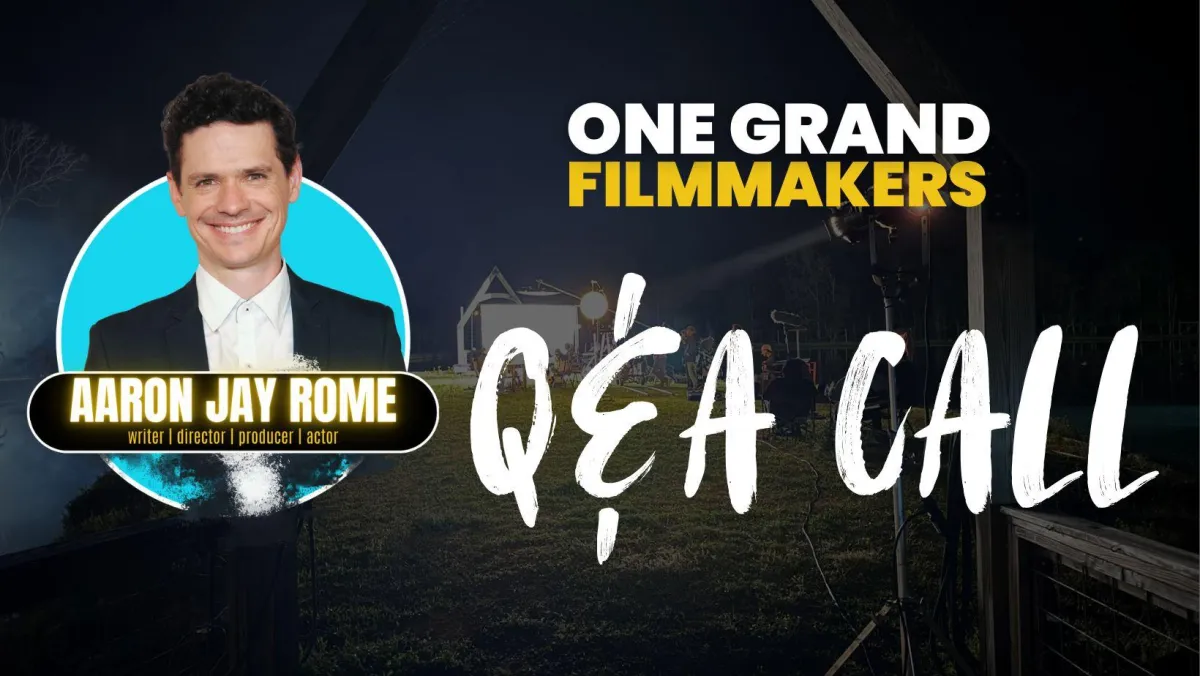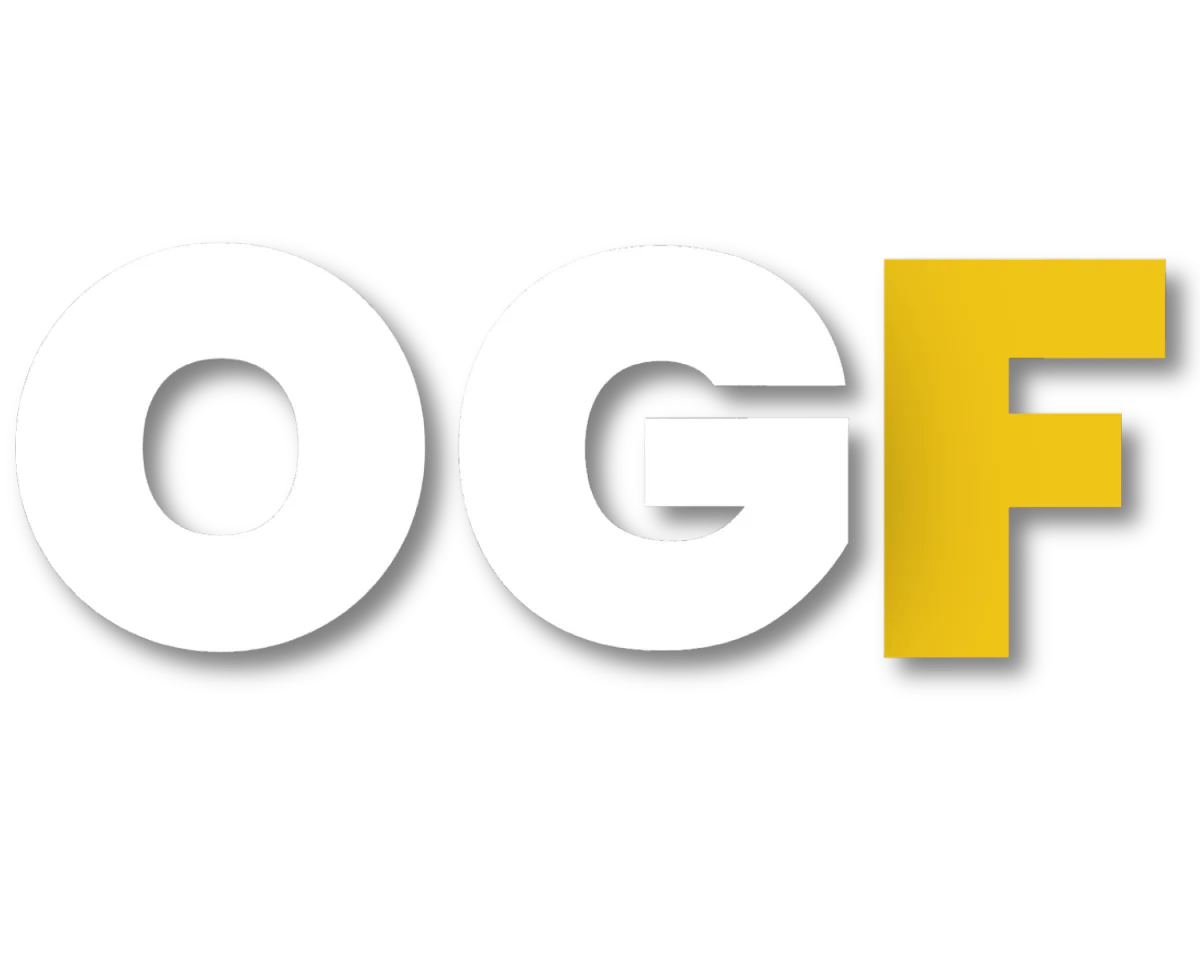GET MY FREE TRAINING
Learn how to use VALUE COMPOUNDING
to Fast Track your career.


Q&A 6-30-25 | Pitch Decks, Podcasts, and Pay-to-Play: Real Film Tactics That Work | One Grand Film
🎬 The Filmmaker’s Ladder: Tactical Takeaways from Our June 30th Q&A
Last night’s OGFilmmakers Q&A was stacked with practical filmmaking advice — from how to actually find funding, to getting A-list actors onboard without a Rolodex full of industry contacts.
If you missed the call, here’s your tactical recap of what mattered most:
💸 Funding Your Film: Think Ladder, Not Lottery
“Nobody’s funding your $3.5M movie if you haven’t made a $10K one first.” – AJ Rome
AJ broke down film funding into clear budget ladders:
Sub-$10K Films (Proof Project)
→ Self-fund. Use credit cards, friends, small partnerships. Build trust and proof.
→ Perfect place to use crowdfunding.
$10K–$100K
→ Package your project: script, pitch deck, locked locations, talent.
→ Small equity investments or soft money (tax incentives, in-kind donations).
$100K–$250K+
→ You need proof from a previous feature, and real distribution interest.
→ Use success from your <$10K film to build credibility.
$500K–$5M+
→ Now you’re playing in territory that demands a sales agent, bankable actors, or pre-sales.
→ But if you don’t have leverage from earlier wins, this path is a dead end.
🎯 Sell the Right Film to the Right People
“You don’t sell a $3.5M film. You build a smaller one that proves you can deliver.”
If your dream project is a $5M genre movie, ask yourself:
What can I make for $5K or $10K that’s in the same genre, tone, or world as that film?
This “Proof Project” becomes the key that opens doors.
🎤 The Secret Weapon: Podcast Tours
“It’s free marketing. It’s niche. It builds authority overnight.”
If your film has a clear audience (horror, mental health, sports, etc.), scrape a list of podcasts in that niche and cold pitch them.
Send 200 pitches. Land 10 guest spots.
Always use one call to action (e.g., “Support the sequel at [link]”).
Great for crowdfunding, WeFunder, or even finding distributors.
Mike Savino (Attack of the Killer Refrigerator 2) is using this strategy — and it’s working. But AJ emphasized the key to podcast traffic: unified focus. Drive listeners to one link. Period.
📦 Pitch Decks that Sell: The 12-Page Formula
AJ revealed his updated 12–14 slide pitch deck formula. Key elements:
Title Page – Cinematic image + logo. No clutter.
Logline/Tagline – One emotional hook.
Synopsis – 4–5 sentences. Only the A story.
Theme + Tone – Use comps: “Friday Night Lights meets Ted Lasso”
Target Audience + Platforms – Get specific (Tubi, Shudder, etc.)
Comparable Titles + ROI – Use the-numbers.com for data.
Characters + Actor Comps – Who would play them? Who’s attached?
Visual Style + Moodboard – Real images, tone references.
Budget + Incentives – Include tax credit states (e.g., Louisiana = 40% back).
Distribution + Monetization – Festivals, merch, brand sponsors.
Team + Credibility – Past wins, press, awards.
Call to Action – What do you want? Investors? Brands? Make it clear.
Pro tip: Use Canva or Adobe Express for polished decks without the learning curve.
🎥 A-List Talent Without an Agent? Here’s How
Want to attach a known actor to your indie film?
Hire a casting director who’s worked with that actor ($15K–$35K).
Have them deliver the script directly.
Be ready to offer a pay-or-play LOI ($50K–$100K development cash).
Use that LOI to fundraise the full budget — now it’s a “Mel Gibson” movie.
📚 Novels ≠ Movies (Until They’re Bestsellers)
If your plan is to write a book and then get it adapted — it’s doable, but not fast. Studios only care when your book proves an audience:
“Nobody’s making your movie from your novel unless it already has fans. A lot of them.”
Best bet: make the movie first, then reverse-engineer the novel later for IP leverage.
📺 Episodics? Finish the Season
If you’re developing an episodic show:
Write the full season
Shoot all episodes if possible(minimum 5–6)
Submit to short-form Emmy categories — great networking tool.
Don’t rely on proof-of-concept pilots. They rarely get picked up unless already paired with known execs or showrunners.
🧠 Your First Feature Is the Lead Domino
AJ closed the session reminding everyone:
“Nobody’s taking you seriously until you’ve made a feature.”
So:
Shrink the script to fit your resources.
Use what you already have.
Start building an audience from day one.
This is the foundation of the Proof Project Challenge — write, shoot, and wrap your first feature in 90 days, no fundraising required.
📍TL;DR – Action Steps
✅ Make your first feature (no more short purgatory)
✅ Use podcasts to promote, fundraise, and build fans
✅ Use Canva to build a beautiful, no-fluff pitch deck
✅ Only pitch $1M+ films after you have a proof project
✅ Attach talent via casting director + LOI
✅ Own your email list. Drive all traffic to one link.
📅 Want help making your first feature?
Check out The Proof Project Challenge
— in the can in 90 days, no fundraising required.


